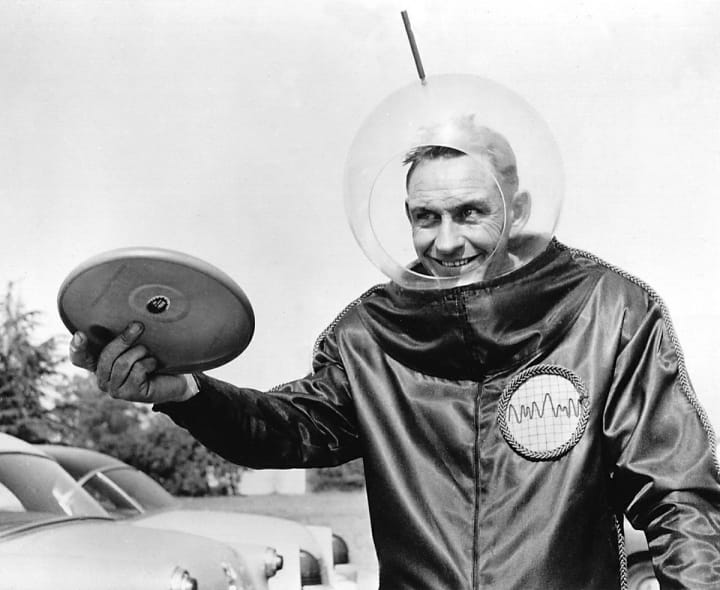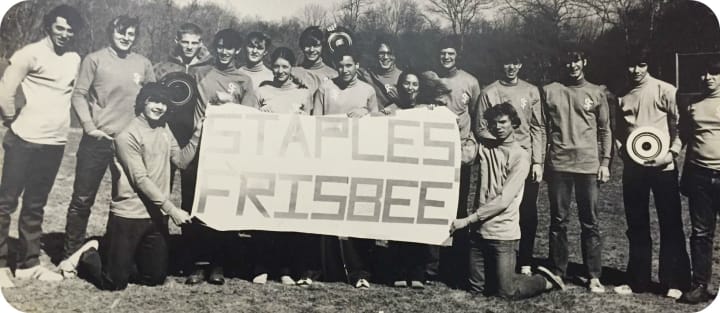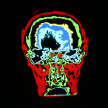Physics of Frisbees
One man is on his way to discover the physics of Frisbees to help athletes everywhere.

No one gives a flying disk about Frisbees. It’s just a sport reserved for semi-athletic college students who don’t want to try out for a real team, right? Wrong. In 2012, Ultimate Frisbee players developed the American Ultimate Disc League which now has 25 teams across North America, according to the New Yorker. In August of 2015, the International Olympic Committee recognized Ultimate Frisbee is eligible to be an event at the summer Olympics. Some people have become so passionate about Frisbees that they have dedicated their lives to studying the physics behind them. That’s exactly what Tom McClintock, a University of Arizona Physics graduate, is doing with his career. He plans on studying the physics behind Frisbees so that he can help UltimateFrisbee players increase their skills on the field.
Through previous studies, it had been discovered that the flight path of a Frisbee disc can be simulated using mathematical models based on coefficients that go along with aerodynamic forces. Two of the most significant forces that scientists have studied in Frisbees are drag and lift. In order to study these aspects, they had to incorporate torque and angular momentum into their mathematical simulations since the disc rotates as it flies through the air. Under the Bernoulli Principle, there is a lower air pressure on top of the Frisbee than beneath it. The difference in pressure causes the Frisbee to rise or lift. This is the same principle that allows planes to take off, fly and land. Another significant factor in the Frisbee's lift is Newton's Third Law which states that for every action there is an equal and opposite reaction. The Frisbee forces air down (action) and the air forces the Frisbee upward (reaction).
Frisbees Become the Preferred Flying Saucers

Image via atomicscout
The air is deflected downward by the Frisbee's tilt, or angle of attack. Spinning the Frisbee when it is thrown, or giving it angular momentum (gyroscopic inertia), provides it with stability. Angular momentum is a property of any spinning mass. Throwing a Frisbee without any spin allows it to tumble to the ground. The momentum of the spin also gives it orientational stability, allowing the Frisbee to receive a steady lift from the air as it passes through it. The faster the Frisbee spins, the greater its stability. However, spinning has nothing to do with the actual 'flying' of the Frisbee by noting that you can spin a Frisbee in place, on a stick or whatever, and it will not 'lift up'. You also can see that the Frisbee is still spinning at nearly 'full speed' when it finally hits the ground, providing further proof that the spin has little to do with lift. Most Frisbees are designed to be aerodynamically stable, but many disc golf discs are intentionally designed to be unstable. Higher rates of spin lead to more stability, and, for a given rate of spin, there is generally a range of velocities that are stable. Designing unstable discs for sports ensures that more skill is required to perform well in a competition.
However, he has admitted that he still has a long way to go before he is able to fully present his findings to the public. Although this research may seem pointless to some people, there is a significant result that will stem directly from it. If scientists can successfully model differences between Frisbees, McClintock firmly believes that Ultimate Frisbee players will be able to perfect their throws, which will in turn affect their well-being. “If you can definitively pin down how a Frisbee [disc] works,” he told The Daily Wildcat, “that lets you go backwards and understand arm mechanics and throwing techniques.” This means that understanding the physics behind Frisbees could help players and non-players alike decrease the likelihood of injury and increase their skills when it comes to throwing disks.
Frisbee Goes Mainstream

Image via BBC
The physics behind Frisbees was first explored in the late 1940’s when Fred Morrison performed some experiments with flying discs. Some of the discs he experimented with were made out of metal while others were formed out of a new material called plastic. In 1955 the Wham-O Company purchased the rights and molds from Morrison. It wasn't until the early 1960’s when Frisbees became the rage. Whamo-O's former General Manager Ed Headrick provided the organization and groundwork for the growth of the Frisbee craze. Today organized competitions take place each year around the world culminating in the World Frisbee Competition in California. Morrison discovered a market for the modern-day flying disc in 1938 when he and future wife, Lucile, were offered 25 cents for a cake pan that they were tossing back and forth on a beach in Santa Monica, California. "That got the wheels turning, because you could buy a cake pan for five cents, and if people on the beach were willing to pay a quarter for it, well - there was a business," Morrison told The Virginian-Pilot newspaper in 2007.
The Morrison's continued their business until World War II, when Morrison served in the Army Air Force, flying a P-47s, and then was a prisoner of war. Mustered out, Morrison sketched a design for an aerodynamically improved flying disc that he called the Whirlo-Way. By 1948, after design modifications and experimentation with several prototypes, Morrison and business partner Warren Franscioni began producing the first plastic discs, renaming them the Flyin-Saucer in the wake of reported unidentified-flying-object sightings. Morrison and Franscioni ended their partnership in early 1950, and in 1954 Morrison formed his own company, called American Trends, to buy and sell Flyin-Saucers, which were by then being made of a flexible polypropylene plastic from Southern California Plastics, the original molder. After learning that he could produce his own disc more cheaply, in 1955 Morrison designed a new model, the Pluto Platter, the archetype of all modern flying discs. He sold the rights to Wham-O on January 23, 1957, and in 1958 Morrison was awarded U.S. Design Patent D183,626 for his product.
About the Creator
Futurism Staff
A team of space cadets making the most out of their time trapped on Earth. Help.





Comments
There are no comments for this story
Be the first to respond and start the conversation.